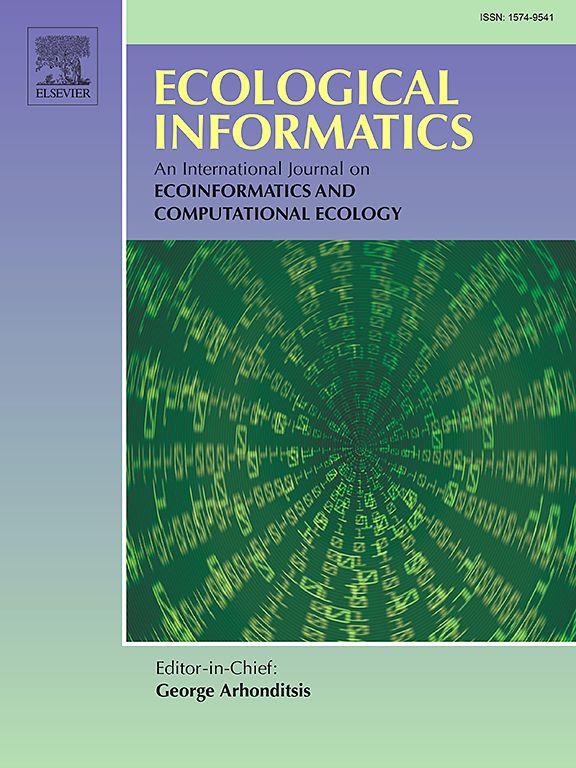Adaptive weight optimization with large pretraining for pest detection
IF 5.8
2区 环境科学与生态学
Q1 ECOLOGY
引用次数: 0
Abstract
Frequent infestations by agricultural pests reduce crop production and significantly affect economic efficiency. Therefore, timely and effective pest control is critical to improving productivity and facilitate environmental protection. Herein, we propose an adaptive weight optimization method based on transfer learning for multimodal pest detection. This approach utilizes pretrained model parameters from public datasets to extract features and enhance cross-modal feature from text and images. Accurate pest recognition and localization are achieved through an adaptive loss function, which optimizes the model’s performance across multiple tasks. In tests conducted on IP102 (36 species) and Pest24 (24 species), which are major agricultural pest datasets, the proposed model achieves average precisions of 65.8% and 76.3% at 50% Intersection over Union (IoU) threshold, respectively. By doing so, our model outperforms existing state-of-the-art methods despite using only 30 training cycles. These results highlight the significant practical value of multimodal pest detection methods in enhancing the efficiency and accuracy of agricultural pest identification. The code and dataset are available at https://github.com/Healer-ML/Pest-Detection.
基于大规模预训练的害虫检测自适应权优化
农业害虫的频繁侵袭使农作物减产,严重影响经济效益。因此,及时有效地防治有害生物对提高生产力和促进环境保护至关重要。在此,我们提出了一种基于迁移学习的自适应权重优化方法用于多模态害虫检测。该方法利用公共数据集中预训练的模型参数提取特征并增强文本和图像的跨模态特征。通过自适应损失函数实现准确的害虫识别和定位,该函数优化了模型在多个任务中的性能。在IP102(36种)和pest 24(24种)这两个主要农业害虫数据集上进行的试验中,该模型在50% IoU阈值下的平均精度分别达到65.8%和76.3%。通过这样做,我们的模型优于现有的最先进的方法,尽管只使用30个训练周期。这些结果突出了多模式有害生物检测方法在提高农业有害生物鉴定效率和准确性方面的重要实用价值。代码和数据集可从https://github.com/Healer-ML/Pest-Detection获得。
本文章由计算机程序翻译,如有差异,请以英文原文为准。
求助全文
约1分钟内获得全文
求助全文
来源期刊

Ecological Informatics
环境科学-生态学
CiteScore
8.30
自引率
11.80%
发文量
346
审稿时长
46 days
期刊介绍:
The journal Ecological Informatics is devoted to the publication of high quality, peer-reviewed articles on all aspects of computational ecology, data science and biogeography. The scope of the journal takes into account the data-intensive nature of ecology, the growing capacity of information technology to access, harness and leverage complex data as well as the critical need for informing sustainable management in view of global environmental and climate change.
The nature of the journal is interdisciplinary at the crossover between ecology and informatics. It focuses on novel concepts and techniques for image- and genome-based monitoring and interpretation, sensor- and multimedia-based data acquisition, internet-based data archiving and sharing, data assimilation, modelling and prediction of ecological data.
 求助内容:
求助内容: 应助结果提醒方式:
应助结果提醒方式:


